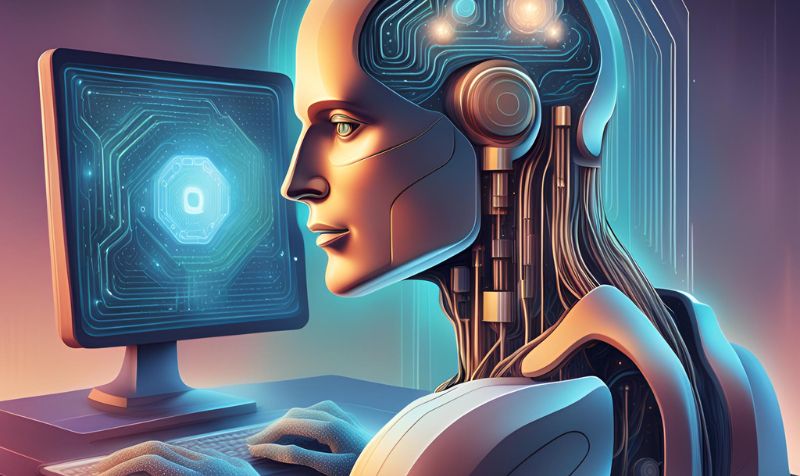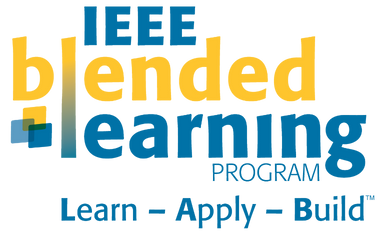

Machine learning is the science of getting software systems or computers, to learn without being explicitly programmed. It works on the simple concept of understanding past experiences. Its primary aim is to allow computers to learn automatically without human intervention.
In this post, we will discuss more about machine learning and outline some of the most common machine learning questions you might encounter when applying for a job/role in the industry or interviewing a candidate. You can read more about machine learning in our definitive guide to what is machine learning.
Table of Contents:
1. What is Machine Learning?
2. Top 15 Machine Learning MCQs with Answers
3. Conclusion
4. FAQs
What is Machine Learning?
Machine Learning is a branch of Artificial Intelligence (AI) that uses algorithms based on historical data to anticipate events more accurately. In a nutshell, machine learning is the ability of a machine to mimic thoughtful human behavior.
The ability of machine learning technology to identify operational difficulties and customer behavior is crucial for the expansion of modern enterprises.
Top 15 Machine Learning Questions with Answers
Machine learning interview questions play a critical role in data science interviews and the path to becoming a machine learning engineer or data engineer. Here are some of the top ML multiple choice questions with answers you need to know about:
1. Which statement best sums up Machine Learning?
a) The selective acquisition of knowledge through the use of computer programs
b) The selective acquisition of knowledge through the use of manual programs
c) The autonomous acquisition of knowledge through the use of computer programs
d) The autonomous acquisition of knowledge through the use of manual programs
Answer: c. Machine learning is the autonomous acquisition of knowledge through the use of computer programs.
Explanation: Machine Learning refers to software systems that can assimilate experience (training data). It is a technology that is all about algorithms that are used to parse data and learn from that data, followed by applying whatever they have learned to make informed decisions.
2. Choose the options below that do not fall within the category of Machine Learning:
a) Semi-unsupervised learning
b) Supervised learning
c) Reinforcement learning
d) Unsupervised learning
Answer: a. Semi-unsupervised learning is not a type of machine learning
Explanation: Machine learning algorithms can be classified into the following types depending on the presence/absence of target variables.
- Supervised learning: [Where Target is present]. In supervised learning, the machine learns using labeled data. The model is trained on an existing data set before it starts making decisions with the new data.
- Unsupervised learning: [Where Target is absent]. In unsupervised learning, the machine is trained on unlabeled data without any proper guidance. The model learns through observations and deduces structures in the data.
- Reinforcement Learning: In reinforcement learning, the model learns through a trial-and-error method. This kind of learning typically involves an agent interacting with the environment to create actions, followed by discovering errors or rewards of that action.
3. What is overfitting in Machine Learning?
a) When a statistical model describes random error or noise instead of underlying pattern
b) Robots are programed so that they can perform the task based on data they gather from
c) While involving the process of learning, ‘overfitting’ occurs.
d) A set of data is used to discover the potentially predictive relationship
Answer: a) When a statistical model describes random error or noise instead of underlying pattern
Explanation: Overfitting in Machine Learning occurs when a model learns the training set quite well, thus incorporating random fluctuations in the training data as concepts. These concepts then impact the ability of ML model to generalize and don’t apply to new data sets.
Here are some of the ways to avoid overfitting:
- By making a simple model with fewer variables and parameters, you can reduce the variance.
- You can also reduce cross-validation methods like k-folds to reduce overfitting.
4. Which of the following machine learning algorithm is based upon the idea of bagging?
a) Decision tree
b) Random-forest
c) Classification
d) Regression
Answer: b) Random forest is based on the idea of bagging.
Explanation: Bagging refers to the technique of combining multiple models by averaging or voting trained random subsets of the training data. Random forest is based on the ideas of bagging and refers to a supervised machine learning algorithm that is typically used for classification problems.
5. Which of the below is not a supervised machine learning algorithm?
a) K-means
b) Naïve Bayes
c) SVM for classification problems
d) Decision tree
Answer: a) K-means
Explanation: Decision tree, SVM (Support vector machines) for classification problems and Naïve Bayes are all examples of supervised machine learning algorithm. Whereas, K-means is an example of unsupervised machine learning algorithm.
6. Which of the following claims concerning Ensemble learning is untrue?
a) It is a supervised learning algorithm
b) It is an unsupervised learning algorithm
c) More random algorithms can be used to produce a stronger ensemble
d) Ensembles can be shown to have more flexibility in the functions they can represent
Answers: b) It is an unsupervised learning algorithm
Explanation: Ensemble learning is not an unsupervised learning algorithm. Instead, it is a supervised learning algorithm that combines several machine learning techniques into one predictive model to decrease variance and bias.
7. Which of the below is an example of an unsupervised learning algorithm?
a) Linear Regression
b) K-Means Clustering
c) Decision Trees
d) Support Vector Machines
Answer: b) K-means clustering
Explanation: It refers to an unsupervised learning algorithm that divides a particular dataset into ‘k’ clusters by simply reducing the sum of squares within clusters.
8. What is cross-validation used for in machine learning?
a) For cross-training, different models
b) For evaluating model performance on multiple datasets
c) Selecting hyperparameters
d) Testing a model’s generalization ability
Answer: d) Testing a model’s generalization ability
Explanation: Cross-validation helps you assess how well a model will generalize to an independent dataset.
9. Which of the below is the role of a confusion matrix in classification?
a) Visualizing decision boundaries
b) Evaluating model performance
c) Selecting hyperparameters
d) Handling missing data
Answer: b) Evaluating model performance
Explanation: A confusion matrix offers a summary of correct and incorrect predictions made by a classification model.
10. Which among the below is the purpose of a learning curve in machine learning?
a) To visualize the model’s accuracy over training iterations
b) To visualize decision boundaries in feature space
c) To visualize feature importances
d) To visualize the training time of a model
Answer: a) To visualize the model’s accuracy over training iterations
Explanation: A learning curve shows how a model’s performance changes over iterations during training.
11. How is the model’s performance affected by the bias-variance trade-off?
a) High bias can lead to underfitting, and high variance can lead to overfitting
b) Increasing bias improves model accuracy
c) Low bias and low variance lead to better ML models
d) Increasing variance improves model generalization
Answer: a) High bias can lead to underfitting, and high variance can lead to overfitting.
Explanation: The bias-variance trade-off suggests finding a balance between underfitting and overfitting.
12 . Which of the below is an example of a classification metric?
a) Mean Absolute Error (MAE)
b) Root Mean Squared Error (RMSE)
c) Area Under the Receiver Operating Characteristic (ROC-AUC)
d) R-squared (R2)
Answer: c) Area Under the Receiver Operating Characteristic (ROC-AUC)
Explanation: ROC-AUC is a classification metric in machine learning commonly used to evaluate binary classifiers.
13. What elements from the following describe the Candidate-Elimination algorithm?
a) depends on the dataset
b) just a set of candidate hypotheses
c) just a set of instances
d) set of instances, set of candidate hypotheses
Answer: d) set of instances, set of candidate hypotheses
Explanation: Candidate-elimination algorithm is a set of instances and a set of candidate hypotheses. These are applied to the training data and the list of accurate hypotheses is output in accordance with the candidate-elimination algorithm.
14. Which of the following statements is false about boosting?
a) It mainly increases the bias and the variance
b) It tries to generate complementary base-learners by training the next learner on the mistakes of the previous learners
c) It is a technique for solving two-class classification problems
d) It uses the mechanism of increasing the weights of misclassified data in preceding classifiers
Answer: a) It mainly increases the bias and the variance
Explanation: Boosting does not increase the bias or variance. However, it mainly reduces the bias and the variance as a technique for solving two-class classification problems.
15. Which of the below models is a generative model used in machine learning?
a) Support vector machines
b) Naïve Bayes
c) Logistic Regression
d) Linear Regression
Answer: b) Naive Bayes
Explanation: Naïve Bayes is a type of generative model which is used in machine learning. Linear Regression, Logistic Regression and Support vector machines are the types of discriminative models which are used in machine learning.
In Conclusion
Machine learning is a rapidly advancing field, with various new concepts constantly emerging on a day-to-day basis.
To stay updated as students, industry professionals, or academicians, IEEE offers a range of important resources and machine learning courses to embrace the endless possibilities of this technology and continue your learning journey.
FAQs
1. What is the machine learning answer?
Machine learning is a type of AI that is focused on building software systems that learn from data, thus enabling them to improve their performance over time
2. What is machine learning explain?
Machine learning is a subset of artificial intelligence, which uses various algorithms that learn from data to make accurate predictions.
3. What is machine learning selective acquisition?
Machine learning is the autonomous or selective acquisition of knowledge through the use of computer programs.
4. Which of the following is a machine learning algorithm?
- SVG
- SVM
- Random Forest
- Knapsack algorithm
An SVM or support vector machine, is a supervised machine learning model that uses a classification algorithm.
Post Tags : Artificial Intelligence Machine Learning Machine learning MCQ
Share:
Social Media
Most Popular



What is Blockchain? A Definitive Guide

IoT Courses: From Free to Paid All Included
Subscribe To Our Weekly Newsletter
Categories
Filter by tags
-
what is cloud computing
-
Visualization in cloud computing
-
smart contracts
-
sensors
-
Regression in machine learning
-
Python programming
-
Python developer salary
-
Python
-
protocols
-
ML
-
Machine learning MCQ
-
Machine Learning
-
IoT with examples
-
IoT sensors
-
IoT device management
-
IoT
-
Internet of things
-
How to learn python
-
Healthcare
-
Hands-on machine learning
-
Examples of machine learning
-
Ethereum
-
Decentralized
-
cybersecurity
-
cryptocurrency
-
Cloud Computing
-
Cloud
-
Blockchain developer salary
-
Blockchain
-
Bitcoins
-
Bias in machine learning
-
Artificial Intelligence
-
Actuators in IoT
-
actuators
-
5g
Related Posts

Introduction to Cybersecurity
The cyberattack juggernaut increased impossibly in 2024 and left its victims more devastated than ever. Last year, companies were the victims of some nasty attacks.

What is IoT and How to Learn IoT: A Definitive Guide (2024)
Introduction The first question that comes to mind is, “What is the full form of IoT?” IoT stands for the Internet of Things, which refers

What is Blockchain? A Definitive Guide
Blockchain is quickly becoming a buzzword in various industries. This technology was popularised with the advent of Bitcoin in 2008. However, blockchain applications have gone

IoT Courses: From Free to Paid All Included
Introduction In this comprehensive guide on IoT courses, we will explore the field of the Internet of Things and its valuable skills for career advancement,
